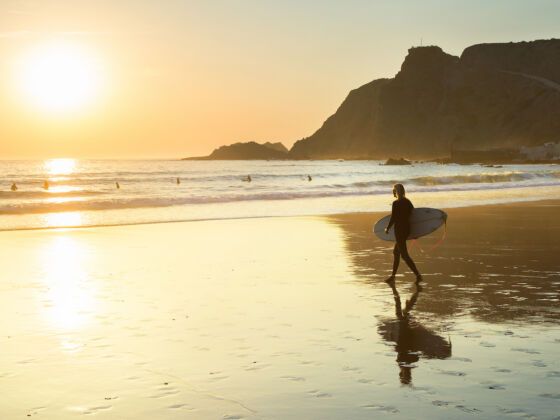PORTUGAL’S ALGARVE COAST is sometimes mentioned in the same sentence as Cancun or Benidorm in Spain – synonymous with the package tourist and concrete resort hotel.
But the Algarve has two things going for it that Cancun and Benidorm don’t. One, most of the ugly resorts and their clientele in the Algarve are confined to enclaves out of sight and out of mind. Two, it has some serious surf.
Whether gentle white water rollers, hollow beach breaks, or thumping reef breaks are your thing, the Algarve offers it all.
